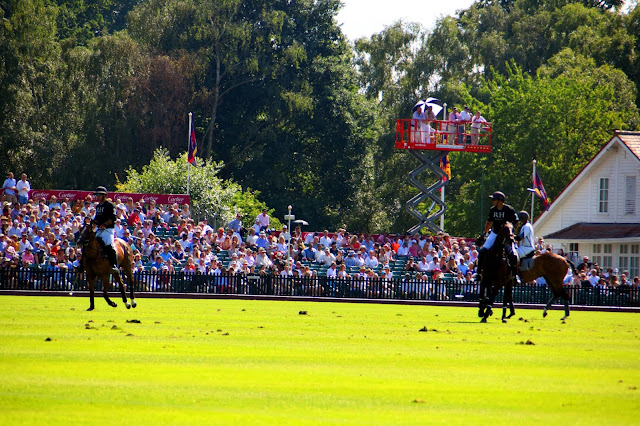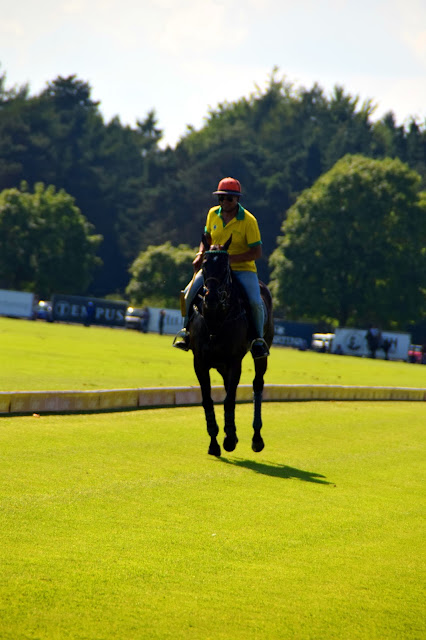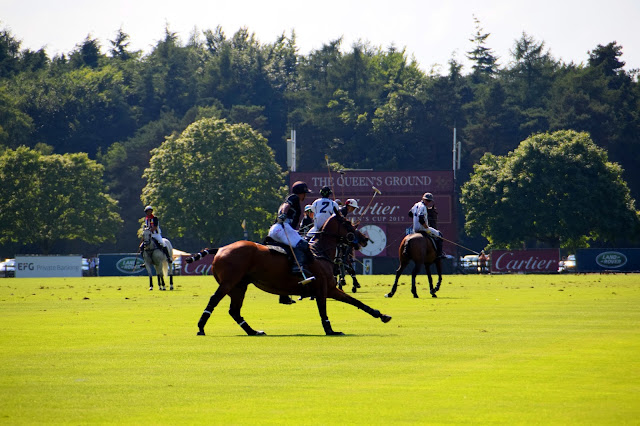The sport of polo is older than recorded history. Its origins are in the inspirational relationship between humans and
horses. This special bond and the unique blending of athletic talents
between horse and rider have helped polo evolve into The Sport of Kings.
Mounted nomads in Central Asia
played a version of polo that was part sport and part training for war,
with as many as 100 men on a side. The game followed the nomads’
migration to Persia (modern Iran) some time between 600 B.C. and 100
A.D.
In Persia, polo became a national sport,
played by the nobility and military men. The game was formalized and
spread west to Constantinople, east to Tibet, China and Japan, and south
to India.
Modern polo originated in Manipur, a
northeastern state of India. The Silchar Polo Club was founded in 1859
by British military officers and tea planters, after Lieutenant Joe
Sherer saw the locals playing polo and said, “We must learn the game!”
From India, polo spread as fast as its enthusiasts could travel,
appearing in Malta in 1868, England in 1869, Ireland in 1870, Argentina
in 1872 and Australia in 1874.
On a trip to
England, James Gordon Bennett, publisher of the New York Herald, saw his
first polo game. Early in 1876, he returned to New York with mallets,
balls and a copy of the Hurlingham rules. The first game was played at a
city riding academy; in the spring they moved outdoors to a field in
Westchester County. That summer, the New York players took polo to
Newport, R.I. Soon the galloping game was being played across North
America.
Polo is a team sport played on horseback. The objective is to score
goals against an opposing team. Players score by driving a small ball
into the opposing team's goal using a long-handled mallet. The
traditional sport of polo is played at speed on a large grass field up
to 300 yards (274 meters) long by 160 yards (146 meters) wide (the size
of nine football fields). Outdoor polo is played with a solid plastic
ball; in arena polo, only three players are required per team and the
game is played with a small air-filled ball, similar to a small soccer
ball. The modern game lasts roughly two hours and is divided into
periods called chukkas (also "chukkers").
- Number One is the most offense-oriented player on the field, and also covers the opposing team's Number Four.
- Number Two has a vital role in offense, either running through and scoring, or passing to Number One; defensively, they cover the opposing team's Number Three, generally the other team's best player.
- Number Three is the tactical leader and must be a powerful hitter to feed balls to Number Two and One as well as maintaining defense.
- Number Four is primarily a defensive player. They can move anywhere on the field, but they usually try to prevent scoring, freeing their teammates for offense.

Polo mounts are called “ponies,” although the term “pony” is
traditional and the mount is actually a full-sized horse. They range
from 14.2 to 16 hands (58 to 64 inches) high at the withers, and weigh
900–1,100 pounds. The polo pony is selected for quick bursts of speed,
stamina, agility and manoeuvrability. Temperament is critical: The horse
must remain responsive under pressure and not become excited or
difficult to control. They are trained to be handled with one hand on
the reins, and to respond to the rider's leg and weight cues. A
well-trained polo pony accounts for a great amount of the player's net
worth to his team.
Polo players must have more than one pony, so
tired mounts can be exchanged between or even during chukkas. A
player's "string" of ponies may number two or three in Low Goal matches
(with ponies being rested for at least a chukka before reuse), four or
more for Medium Goal matches (at least one per chukka), and even more
for the highest levels of competition.
[ http://www.polomuseum.com/sport-polo/history-polo]



















































































No comments:
Post a Comment